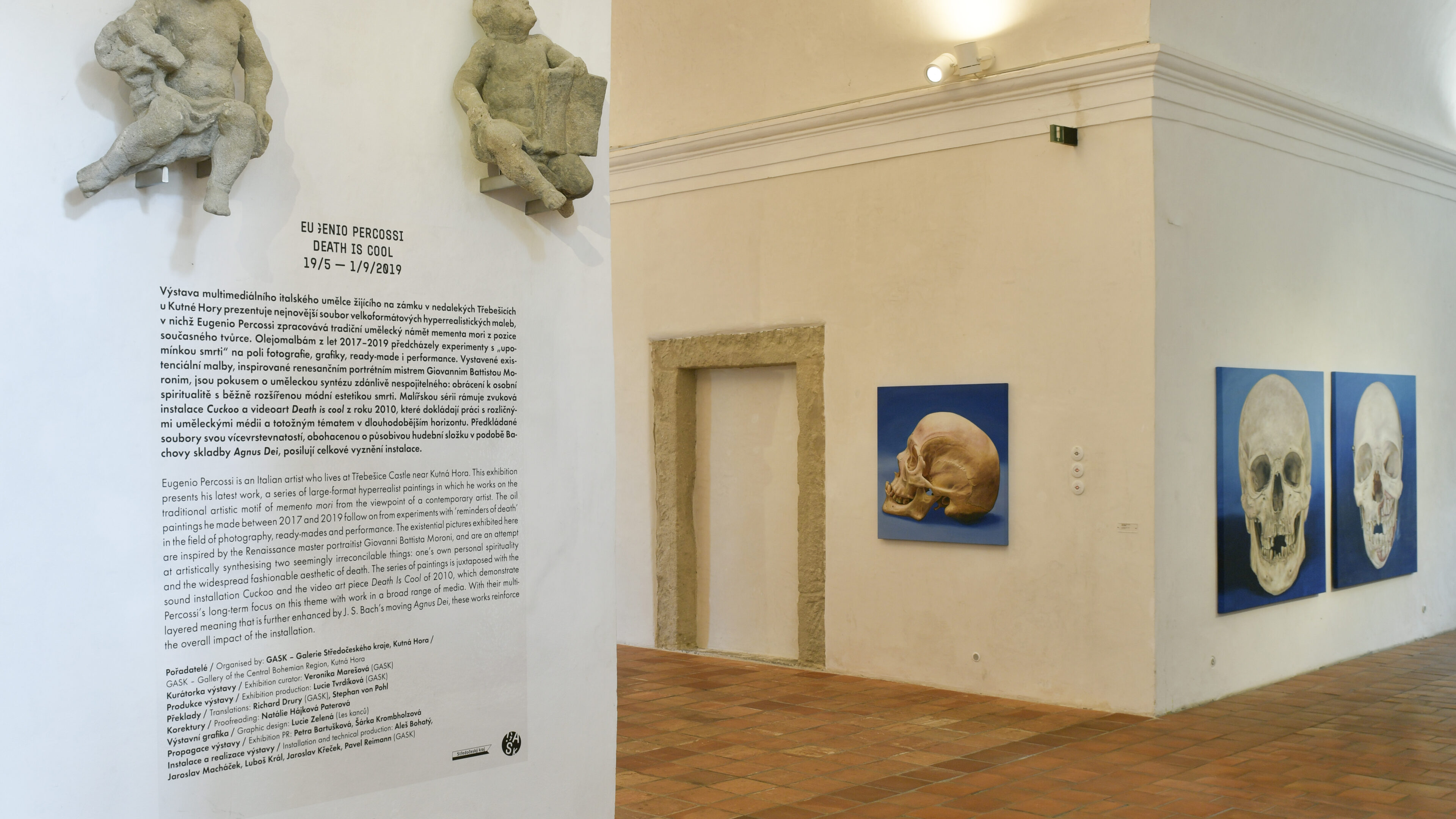The exhibition Death Is Cool is a multi-layered audiovisual project in which Eugenio Percossi, a multimedia artist living at the castle in Třebešice near Kutná Hora
01. 09. 2019

The exhibition Death Is Cool is a multi-layered audiovisual project in which Eugenio Percossi, a multimedia artist living at the castle in Třebešice near Kutná Hora
The exhibition Death Is Cool is a multi-layered audiovisual project in which Eugenio Percossi, a multimedia artist living at the castle in Třebešice near Kutná Hora, works with the traditional artistic motif of the memento mori, which was particularly popular in the Netherlands of the early 17th century. For Percossi, the vanitas is a constant central theme, much like the contemporary Czech painter and sculptor Josef Hnízdil. But unlike Hnízdil, Percossi does not gravitate towards existential moods; instead, he subjects the ancient motifs of vanity and the transience of life to long-term study from entirely different positions and premises. Above all, he explores the emptied aestheticization and commercialization of the symbols of death (skulls and bones as stickers, caricatures, logos and fashion, or as decoration on fabrics or clothing), and then uses various media (painting, photography, printmaking, readymades, and installation or performance art) not to confront his observations but to combine them with the opposite approach, by looking inside and observing inner and purely spiritual matters.
The focal point of Death is Cool are the contrastingly situated hyperrealist cycles of oil paintings After Moroni (2018–2019) and Into the Blue (2017–2019). The cycles were created concurrently and possess certain commonalities and points of intersection, but their tone is completely different, if not antithetical. The canvases from After Moroni are a dark and “decadent” homage to the legacy of the Italian Renaissance master Giovanni Battista Moroni, who is best known for his brilliant portrait work characterized by precise craftsmanship and the perfect depiction of his subjects’ psychology. Although Percossi appropriates these famous portraits in terms of both motif and composition, he entirely shifts their content and meaning to create a radical transformation in tone. It is as if he had caused Moroni’s canvases to die and pass into the afterlife, a kind of life after death for paintings: The ruddy-cheeked subjects become anaemic dark silhouettes, something like posthumous mirrors, mere shadows of the living subjects. By comparison, Into the Blue shows the fascinating beauty of realistic skeleton heads anchored in a clear range of blue within the fresh and calm depths of the background. These human skulls as “designer” objects speak non-emotionally to the rough fate of their owners before and after death through easily understood anomalies and post-mortal alterations made for the purpose of scientific study. This descriptive series of oversized canvases does not feel oppressive; instead it aestheticizes objects of anthropological study.
The exhibition’s painting section is framed by the powerful sound installation Cuckoo (whose sound of a cuckoo confronts us with the folk belief in the relationship between the number of cuckoo calls and how many years we will live) and the video art piece Death Is Cool from 2008–2010 illustrating different aspects of the presented themes. The video projection is a socio-societal exploration of the daily life of the residents of New York, for whom the symbols of “vanitas” are mere decoration and whose style of clothing shows their membership in various subcultures to which they feel a certain affinity (rock, metal, Goth etc.)
We should point out that Death Is Cool – a contemplative and lightly ironic exhibition documenting the ancient human desire to know what lies beyond the transcendental horizon of experienced reality – is being held in the same town known for the famous ossuary in Sedlec, one of the most important funerary monuments of the Czech Baroque, which gives the broad multi-genre concept of Percossi’s exhibition an even greater symbolic dimension.